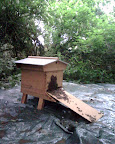Bops, tree hugging, and safe wagers
Back in July I wrote about how Apache Harmony's TreeMap implementation had been used (with modifications) to deliver improvements in Sun's SPECjbb2005 score by "a solid 3-5% depending on the platform" according to Dave who also promised that they were "making the necessary steps to give back [the] code changes to Apache Harmony"; even though they are not obliged to do so according to the Apache License.
Did you expect us to sit and wait?!
IBM has just published its latest SPECjbb2005 scores with, amongst other things, an enhanced version of TreeMap from Harmony that gives them a 10% boost, and thereby move ahead in many reporting categories. Derek has all the details, and I encourage you to read them.
It would be interesting to look back and compare the changes Sun and IBM made to Harmony's TreeMap, and merge them for the common good.
While I'm sure Dave's intentions are pure, I doubt the suits will let him contribute his changes back to Apache and all the talk of "requiring innovation sharing in the commons" only applies in one direction. In fact, I'm so sure, that if Sun do successfully contribute their TreeMap changes back to Apache Harmony I promise to give £500 of my own hard-earned money to The Woodland Trust to benefit some real trees.










